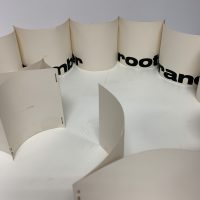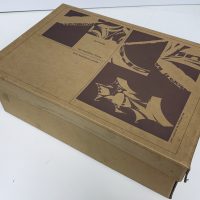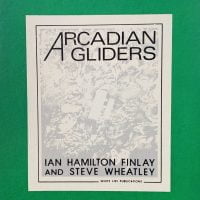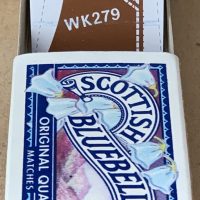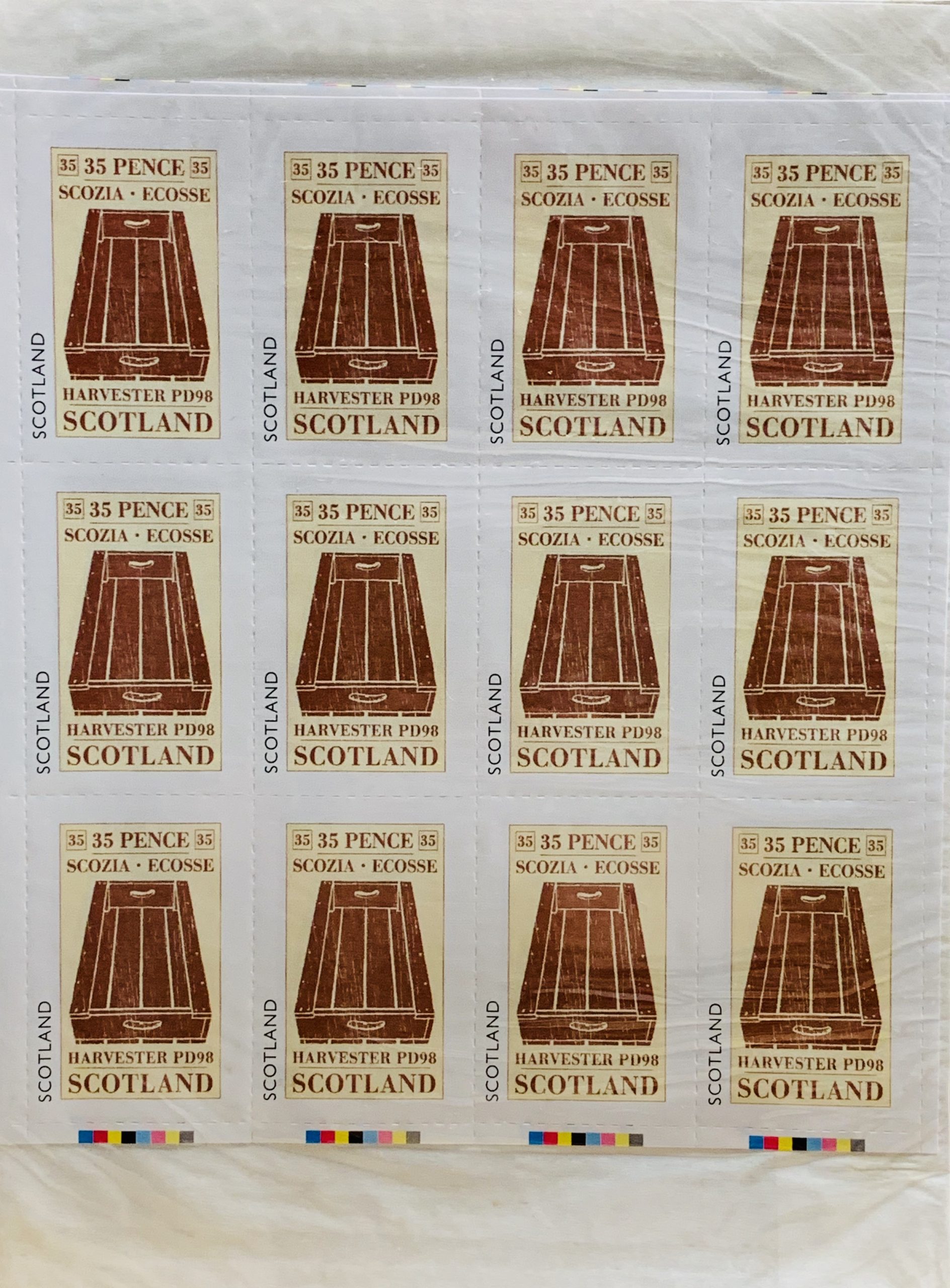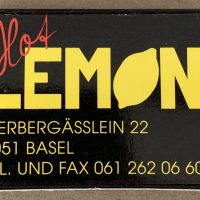SP. NET MARKERS OF THE DISCIPLES. 1999. PRIVATE CHRISTMAS GIFT.
SP. NET MARKERS OF THE DISCIPLES. 1999. PRIVATE CHRISTMAS GIFT.
Little Sparta: Wild Hawthorn Press, 1999
Original mailing box content of a 2 x 4 x 1cm, pewter faux "net marker" with the inscription "SP" and a 12 x 16cm, 4pp printed card. A Christmas gift (here to the art dealers and curators M+R Fricke, Dusseldorf). Net markers, traditionally made of wood or cork, were used to establish ownership of nets in fishing communities and in ports usually carved with the fisherman's initials (sometimes a monogram) or later, as boats and their crews grew larger, with the fishing numbers of the fisherman's boat.
The card has a drawing on it (by Gary Hincks) of five net markers with A, JS, JN, SP, A on them - these represent the first five of Jesus's disciples and there is a biblical quote - from Matthew 4: 'As he walked by the Sea of Galilee, he saw two brothers, Simon, who is called Peter, and Andrew his brother,...“. The card was signed in red ink “love from Ian and Pia (Simmig)".
The pewter marker here has "SP" on it - representing Simon Peter (later to become the Catholic Saint Peter and the founder of the Catholic church). Being a Christmas gift this has a religious meaning - the first disciples were fishermen and much of that metaphor of Jesus as a fisher of men is reflected in this story of recruitment. This object multiple falls firmly within Finlay's interest of marine life and the communities around them.
The outer mailing box is a little battered due to the mailing process and the inner card is slightly bent due to the box not quite being big enough to allow it to sit without some warping but otherwise this is in VG+ condition. Scarce - limitation was limited to those for friends and colleagues.



